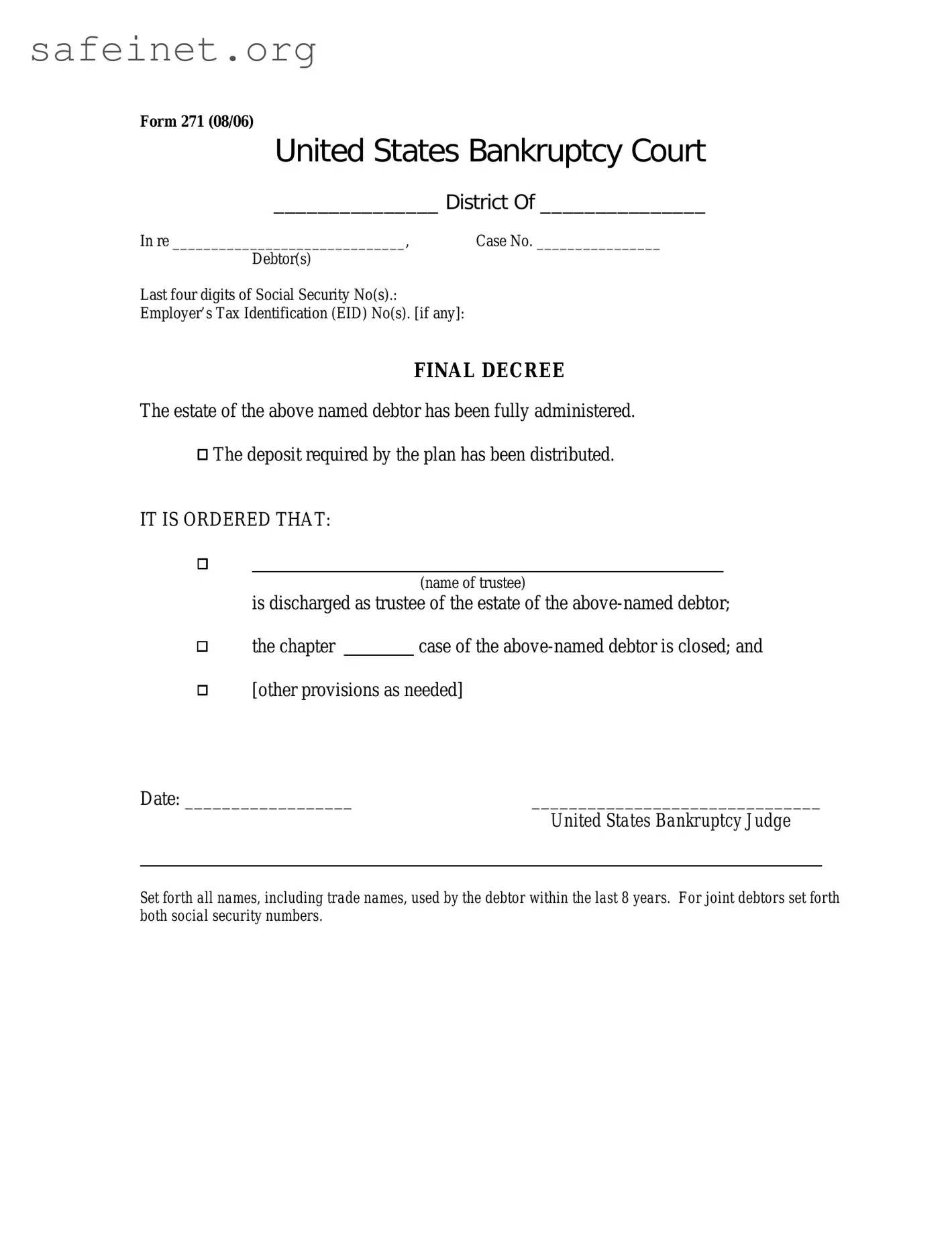The US Courts 271 form serves as a notice of hearing for cases involving compromises or settlements. This document is typically filed in bankruptcy proceedings and is essential for informing the court and interested parties about upcoming hearings related to proposed settlements. It ensures that all relevant stakeholders are aware of the proceedings and can participate if they choose.
3. When should the US Courts 271 form be filed?
The form should be filed as early as possible once a compromise has been reached or proposed. Typically, it is important to submit it before the hearing date. This allows sufficient time for the court and all relevant parties to review the proposed settlement and prepare for the hearing. Delays in filing might postpone proceedings unnecessarily.
4. What information is needed on the US Courts 271 form?
When filling out the US Courts 271 form, specific details are required, including the case number, the parties involved in the settlement, and a brief description of the proposed compromise. Additionally, the date and time of the hearing should be clearly stated, along with any relevant instructions for notifying interested parties.
5. Is there a fee associated with filing the US Courts 271 form?
There is typically no separate fee specifically for filing the US Courts 271 form. However, regular filing fees associated with court documents in bankruptcy cases may apply. It is advisable to check with your court’s filing requirements or consult with legal counsel to determine any applicable fees before submission.
6. How is the US Courts 271 form served to interested parties?
After completing the US Courts 271 form, it must be served to all interested parties in the case. This can typically be done through regular mail or electronic filing, depending on local court rules. Ensuring that all parties receive the notice is crucial, as it allows them to attend the hearing and voice any concerns regarding the proposed settlement.
7. What happens after the US Courts 271 form is filed?
Once the form is filed and properly served, a hearing date will be scheduled. During this hearing, the court will review the proposed compromise and consider any objections raised by interested parties. The judge will ultimately decide whether to approve the settlement based on the merits and any testimonies presented during the hearing.
8. Can changes be made to the US Courts 271 form after it is filed?
Changes can be made to the US Courts 271 form, but it usually requires filing an amended document with the court. This amendment should include an explanation of the changes and must be served to all interested parties again. It’s important to ensure that the court and involved parties always have the most up-to-date information.
9. What should you do if you miss the deadline for filing the US Courts 271 form?
If the deadline is missed, it is important to act quickly. Contact the court as soon as possible to inform them of the situation. In some cases, it may be possible to request an extension or a new hearing date. Legal counsel can provide guidance on the best steps to take when facing such a situation.
10. Where can I find the US Courts 271 form?
The US Courts 271 form can typically be found on the website of the respective court where the case is filed. Additionally, legal aid websites and resources may have the form available for download. Always ensure you are using the most current version of the form to comply with court requirements.

